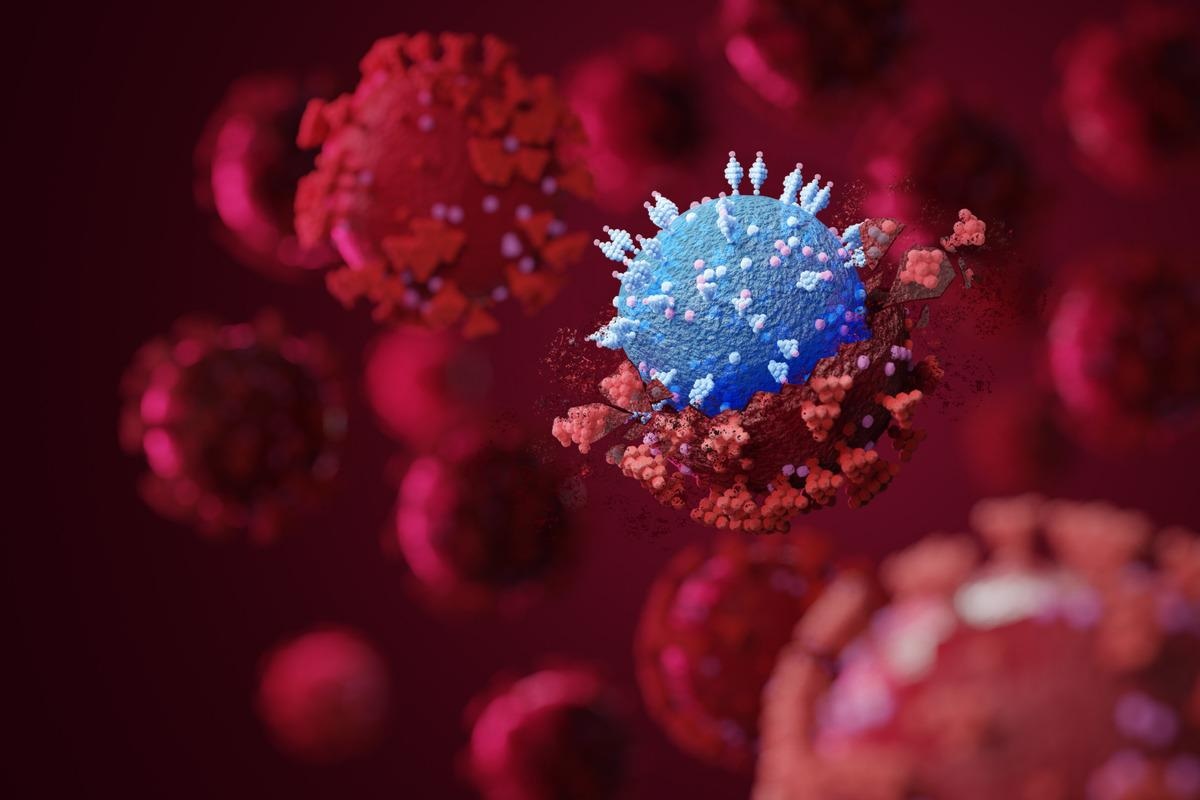 By Neha MathurReviewed by Danielle Ellis, B.Sc.Mar 18 2022
By Neha MathurReviewed by Danielle Ellis, B.Sc.Mar 18 2022In a recent comment published in Nature Reviews Microbiology, researchers raised concern regarding the emergence of new severe acute respiratory syndrome coronavirus 2 (SARS-CoV-2) variants with unpredictable severity and immune evasion potential due to its ongoing fast-paced antigenic evolution.
 Study: Antigenic evolution will lead to new SARS-CoV-2 variants with unpredictable severity. Image Credit: Fit Ztudio/Shutterstock
Study: Antigenic evolution will lead to new SARS-CoV-2 variants with unpredictable severity. Image Credit: Fit Ztudio/Shutterstock
Lower severity of Omicron could be a coincidence
The high transmissibility, availability of several animal host reservoirs, the phenomenon of waning immunity, and more importantly, antigenic evolution contribute to the continued persistence of SARS-CoV-2 in humans. Accordingly, the researchers argued that SARS-CoV-2 is all set for continuous circulation in humans, and milder infectivity of its new variant of concern (VOC) Omicron could merely be a coincidence.
Predicting the virulence of a pathogen is complex, and typically evolutionary pressure does not select against it. In the case of SARS-CoV-2, although disease severity manifested late in infection, only after its transmission attained a peak, it does not suggest that the lower severity of Omicron is a good predictor for future variants.
Perhaps the prospect of future VOCs featuring the potentially devastating combination of the ability to re-infect due to immune escape along with high virulence is regrettably realistic. The notion that widespread vaccine or infection-induced immunity will eventually result in herd immunity and guarantee milder SARS-CoV-2 infections in the future also seems quite unrealistic from the standpoint of the antigenic evolution of SARS-CoV-2.
As the viral antigenic profile will adapt in response to host immune pressures resulting in immune escape, the immune system will not be able to prevent severe disease. On a population level, it would increase the rates of re-infection and disease severity. Omicron's rapid emergence remarkably demonstrated how SARS-CoV-2 is capable of considerable antigenic escape over a relatively short period.
Omicron, featuring at least 50 new amino acid mutations, is highly antigenically divergent from the original ancestral Wuhan-Hu-1 strain and other VOCs of SARS-CoV-2. It has rapidly spread and evaded already waning immunity to cause breakthrough infections in vaccinated and previously-infected individuals alike. Omicron's genetic divergence and functional significance of this divergence were demonstrated by the increasing proportion of its BA.2 lineage.
Evolutionary evidence of antigenic divergence of yet to emerge SARS-CoV-2 variants
Three earlier SARS-CoV-2 VOCs - Beta, Gamma, and Delta - also featured immune escape mutations, and there is no scientific evidence to suggest that this evolution is coming to a halt anytime soon. As per the evolutionary theory, these VOCs are the tip of the ‘evolutionary iceberg.’ Several SARS-CoV-2 lineages, highly divergent from each other and with increased immune evasion capabilities, are ready to emerge over time.
Another fascinating aspect of the antigenic evolution of SARS-CoV-2 is that it is increasingly optimizing its transmissibility (Rt) by refining its ability to re-infect immunized individuals and less via being infectious. Earlier SARS-CoV-2 VOCs were 50% more infectious than their predecessors, including the Alpha and Delta VOCs, as a fitter virus is the one that transmits to the maximum number of hosts, and this was possible only by becoming more infectious. However, it was unfeasible in a highly immune population.
Accordingly, as the human population transitioned to high levels of immunity, SARS-CoV-2 accelerated the rates of antigenic evolution, and Omicron, with its extraordinary ability to re-infect immune individuals, best exemplified this evolutionary strategy.
However, the emergence of a less virulent strain does not imply that the SARS-CoV-2-induced pandemic is approaching its end. Once Omicron infects the majority of individuals, another variant, highly antigenically divergent from Omicron, might emerge as immune escape needs to adapt to continually changing targets.
Although at present, it is impossible to predict the time of emergence or antigenic and viral properties of future SARS-CoV-2 variants, a more infectious VOC would most likely replace Omicron along with the features that contribute to its lower severity. Notably, Omicron preferentially infected the upper respiratory tract (not the lung tissue) and showed a reduced tendency to induce cell-cell fusion.
Intriguingly, molecular clock analysis had predicted the split of Omicron from its predecessors a year before its actual epidemic emergence. Thus, suggesting that other antigenically divergent SARS-CoV-2 variants have already arrived or are currently forming and will soon emerge.
Conclusions
There is an urgent need to dissect the mechanisms, circumstances, and factors contributing to the generation of antigenically divergent SARS-CoV-2 variants. More specifically, it is crucial to examine patterns of antigenic evolution in immune-deficient individuals and animal species residing close to humans, which could be SARS-CoV-2 animal reservoirs. Such understanding will enable a more reliable evaluation of the future burden of coronavirus disease 2019 (COVID-19) in humans and accordingly prepare mitigation and intervention strategies.